8 Calming or Stimulating Sensory Activities for Kids with Sensory Impairment
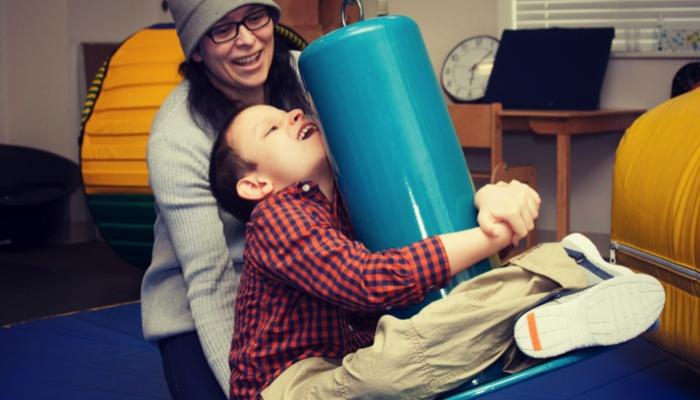
This post may contain affiliate links; please see our terms of use for details.
How are you feeling right now? Excited? Agitated? Tired? Bored?
Did you know that you are filtering sensory input all day, from the sound of running water in the kitchen to the bright light streaming in through the windows, and that this input can have a profound affect on how you feel and how you respond to people and events around you?
Now imagine you’re a child with a sensory impairment (like blindness) or a Sensory Processing Disorder (SPD) and you can see how sensory input can complicate things pretty quickly!
Often when we’re talking about sensory integration or sensory activities, we’re looking at ways to help our kids maintain a constant level of arousal. Kids who “check out” or even fall asleep in a loud environment, for example, may need stimulating techniques to help them stay alert. On the other hand, children who “freak out” or revert to tantrums when they are over stimulated, will need calming strategies. What we want as parents is an arsenal of calming and stimulating activities that can help our kids make it through the day! Below is a list of activities you can try with your child, along with ways to make them more calming or more alerting and information about which sensory system they target. Try them out and see which work for you!
- Rockers
- Therapy Balls
- Tactile Bins
- Swings
- Light Up Toys
- Trampolines & Body Socks
- Sound Machines
- Scents
1. Rockers
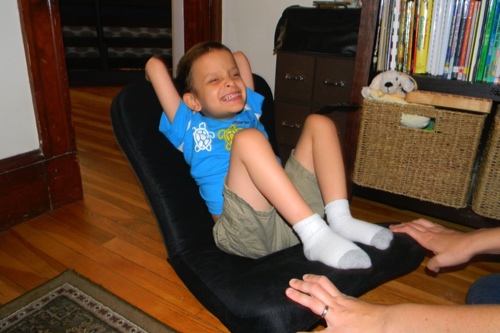
A rocker doesn’t have to be fancy. Anything from a child’s rocking chair or baby rocker to even mom or dad’s lap can work! Rocking targets the vestibular system, the sensory system that tells your body where you are in space and how you are moving and greatly contributes to your sense of balance.
Try using the rocker to reach a calm state:
- Slow rocks
- Rhythmic
- Rest your head to the side
- Have someone rock the chair slowly for you
- Add a weighted lap blanket
Try Using the rocker to reach an alert state:
- Faster rocks
- Unpredictable movements
- Use your feet to rock yourself
2. Therapy Balls

Therapy balls are great because they are affordable and easy to find! They also come in a range of sizes and colors, so you can choose one that fits your child’s needs best. We particularly like peanut balls because they are more stable and won’t roll away as easily.
Therapy balls target your vestibular and proprioceptive systems. Your proprioceptive sense tells you where your body is in relation to itself. For example, is your hand by your side or raised up over your head? Proprioception can also tell you how much pressure or strength you are using, as in how hard your hand is pressing against the wall.
Try using your therapy ball to get different types of input:
- Sit on the ball and bounce
- Lay over the ball on your stomach with your hands on the ground and press into the ground
- Sit on the ball and rock side to side
- Lay on the ground and have someone squish you underneath the ball
- Sit on the ball and move the ball around in gentle circles
3. Tactile Bins
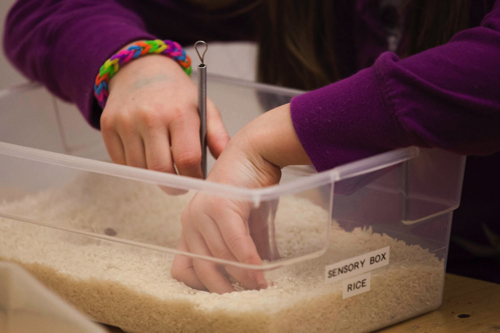
You can put pretty much anything in a plastic bin and call it sensory play (seriously!), but the more thought you put into it, the more your child will get out of it. Bins usually begin with a filler (like dried rice or dried beans) which you can then use to hide objects in. You can also get really creative with different tactile items and themes! There are a ton of ideas online for sensory bins, but one of my favorite places to visit is Little Bins for Little Hands. Sensory bins mostly target your sense of touch, but you can easily add scents or colors to your bin as well.
You can use your tactile bins to:
- “Wake up” your hands before a fine motor activity
- Practice understanding and distinguishing objects by touch (Can you tell the difference between a penny and a dime in a bin of rice without looking?)
- Get used to touching different textures
- “Warm up” before an activity with intense touch sensations (like cooking or finger painting)
4. Swings
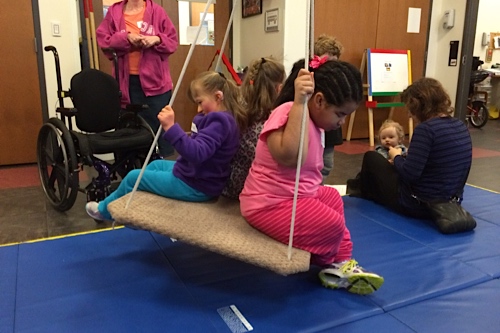
Swings awaken the vestibular system and can be a wonderful way to keep active in the winter if you have a place for an indoor swing. Of course, there’s also always swings at your local park or playground in the summer too!
Try a platform swing:
- How does it feel to swing while keeping your head in different positions?
- Try sitting upright, laying on your side or sitting with your head on your knees
Try a bolster swing:
- Try spinning
- Do you prefer clockwise or counter-clockwise?
- Fast or slow?
- Is spinning alerting or calming for you?
5. Light Up Toys
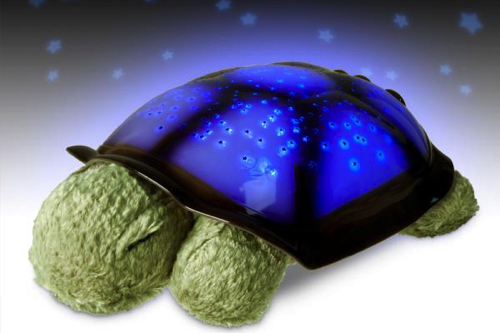
Simple and soothing light toys, like the Twilight Turtle, can encourage the visual system in children who have vision. Pairing the lights with music can also have a calming effect on many kids.
Try using visual input to reach a calming state:
- Do the muted colors and soft light of the Twilight Turtle help?
- Do you prefer to close your eyes (no visual input)?
6. Trampolines & Body Socks
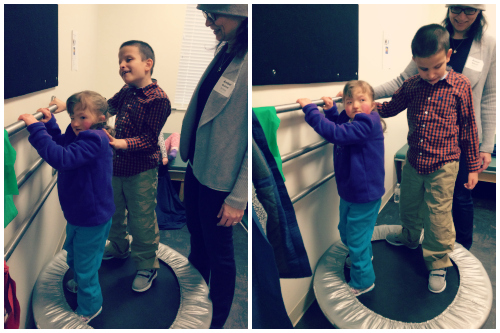
Proprioceptive input (deep pressure through the joints and muscles) is calming for most people. Try big jumps on a trampoline or stretching out in a body sock to feel that pressure.
What are some other ways to get proprioceptive input?
- Carry heavy bags, like groceries
- Put away dishes
- Push a wheelchair or stroller
- Crawl through a tunnel of couch cushions
- Scrub the tub
- Wrap up tightly in a blanket and wiggle to get free
- Jumping Jacks
- Chair push-ups
7. Sound Machines & Music
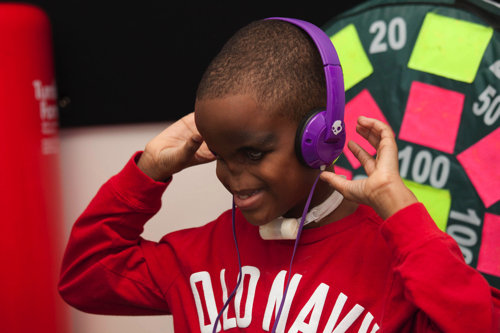
Auditory input can be either calming or alerting, depending on the type of sound and the situation. Auditory input might be added in or removed, depending on the environment and any stressors present. If the environment includes other demands, it can help to eliminate extra auditory input. For example, some people like to turn off the car radio when navigating an unfamiliar route or prefer extra quiet when that are not feeling well. At other times, adding auditory input can increase focus, such as listening to classical music while studying.
Listen to the sounds on a sound machine:
- Which sounds do you like?
- Do they make you feel relaxed or excited?
Listen to your favorite music:
- What type of mood does it put you in?
- When would you want to listen to these songs?
8. Scents

Scents engage the olfactory system. You can place scented oils or extracts on a cotton ball or piece of felt and insert into a ziplock bag or small baby juice container with holes in the lid. You’ll be able to smell through the bag or container without getting oils or extracts on your clothing. Some scents (lavender, rose, vanilla) can be calming, while others (citrus, mint, cinnamon) can be alerting. Try to pair calming scents with calming activities, like bath time or bed time, and alerting scents with alerting activities, like getting up in the morning.
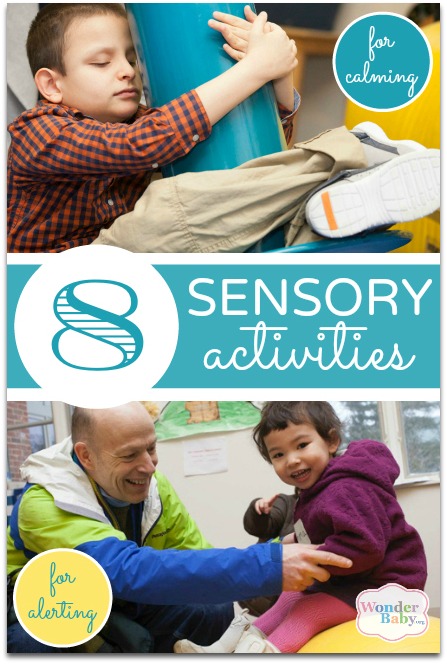
Read this article in Arabic: حيوا-السيدة-العمياء
Related Posts
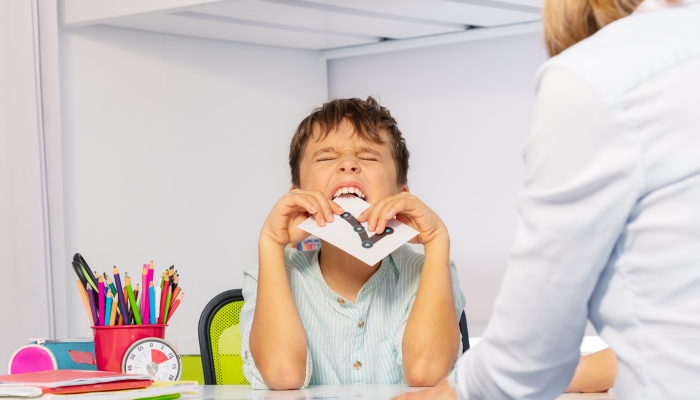
Behavior
Understanding Intermittent Explosive Disorder in Children
Are you worried about your child’s unexpected aggression and explosive behaviors? Learn how to support a child with intermittent explosive disorder.

Behavior
5 Emotional Regulation Activities for Kids
Want to teach your child how to regulate emotions? Here are emotional regulation activities for kids that can help!

Sensory Activities
5 Sand Play Activities to Encourage Fine Motor Development
Sensory bin, at the beach, or in a sandpit? Try these sand play activities to help toddlers and preschoolers develop their fine motor skills.